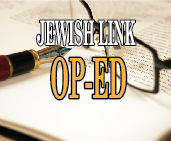Jews count. We count up. We count down. We count hours, days, weeks, months and sabbatical years. We also count minyan members, ounces, handbreadths, egg volumes, sheep for tithing and more. By necessity, we learn our numbers. But what can we learn from numbers?
Perhaps, thinking about some numbers will help us proceed successfully from this Sinai moment.
- Ten is the number of the Aseret Hadibrot, the Ten Eternal Pronouncements of Hashem from Mount Sinai. Ten is also the number of fingers on our hands, and the minimum number for a minyan, that is, a functioning community.
A thought: Two is a couple, three is a family. When three families invite in one extra who is not yet a family-builder or member—and decide to work together—a foundation for true community is set.
It is easy to count the fingers on our hands, even to add things together, but community building is not easy. So, how do we do it? Through sharing common principles, common memories, and joint goals that lead to mutual caring and action. Active caring creates and maintains community. It was that unique moment at—and the words of—Sinai that provided and still provide for us the necessary principles, memories and goals to be a people and a community!
- Yet we never count “10” for a minyan; we use other ways, to avoid counting individuals.
So, a related thought: Is a minyan 10 x 1? Are we just 1/10th of a minyan? Or something else—and more? Perhaps, being part of a minyan makes us more than the “one” we are when we stand alone, by ourselves. Perhaps, the challenge is to remain our unique one, while still being part of the community.
At the same time as we ask: “What can and do I gain from being a member of this group?” We should also ask: “What is it that I, particularly, bring to the table or can contribute to the ongoing and greater communal good?”
Just as each of the Aseret Hadibrot could stand alone yet are so much more dynamically effective together, so can we be. Together. [Which could take us back to the lesson from the pre-Pesach half shekel. But that’s for a different time.]
- In his negotiations with God at Sodom, Avraham Avinu started with 50 and ended with 10, while we almost do the reverse in the Omer. We start with one and just about reach 50.
It may not be a simple coincidence. It can be a reminder. Avraham was known for his gemilut chesed, acts of lovingkindness. Sodom was not. And for what does Boaz laud Ruth, whose story is read on Shavuot? Her chesed to Naomi! Yet, Ruth is from Moav, a people born from Lot’s daughter upon their escape from Sodom, the ultimate “anti-chesed” city.
Are we being reminded to show respect to all those who live “chesed” live—Jews and non-Jews alike? Perhaps we are being taught that active, sincere chesed is what we should be about! The Talmud does teach that among three signature Jewish character traits is active gemilut chesed. (Do you know the other two?)
- So, let’s think about chesed: While we can learn so much from nature—cleanliness from cats, for example, or loyalty from dogs—we learn true chesed from … [drum roll] … Hashem.
The Torah begins sentient human existence with an act of chesed: God clothes the naked, Adam and Chava. The Torah ends its narrative with an ultimate act of chesed, Hashem burying Moshe. The Torah is literally a parenthesis of chesed. Essentially, all else is commentary.
- Yet, note: Ruth came from the royalty of the not-so-friendly nation Moav. Her ancestors lived in a most evil city, Sodom. But look what she became: the ancestor of King David and of the Mashiach!
Yes, Lot was Avraham’s nephew, but we can’t always point at some genetic spark of goodness in everyone. Yes, the King of Moab did once show respect to God—but we can’t always find the good episode in someone’s background. But we can always look for the good in others, nurture it, and draw it out with respect and affection—by consistently acting according to the moral and ethical principles that stem from our ancestors—and from Mt. Sinai. Doing so can and will draw them to us and to Godliness… and raise them up. Our model should be Naomi—the other true heroine in the Book of Ruth.
There is, however, a danger in becoming a people that counts so much. We may focus too much on the counting, and not on the why; on aggregate totals, but not on values. We cannot know the inner workings of our own soul, let alone that of another. We cannot judge the motivation or the long-term results of any act. But God can.
Therefore, as we start to count ounces or hours or size of donations, ask—as God taught us to at Sinai: What really counts? Who counts? Who can be counted on?
And, most important, can we be counted on?
Chaim Lauer is a Jewish educator and communal professional, author and speaker, known for his programmatic creativity and teaching skills. For over 50 years he has served the Jewish community in various professional capacities, leading Federations, Boards of Jewish Education, and consulting with other national and local organizations.










